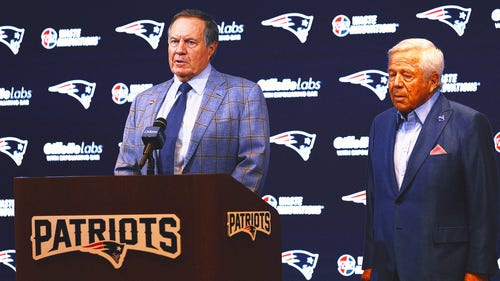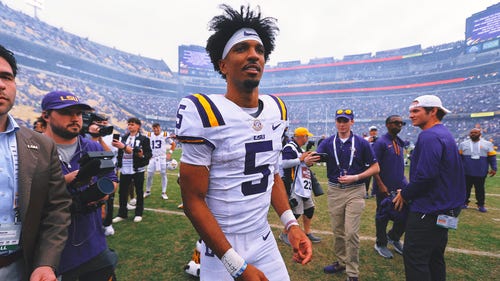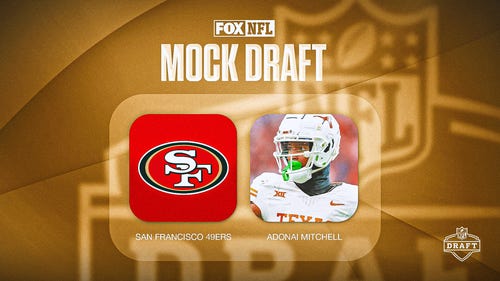
Athletes go to great lengths for recovery
Santana Moss sought treatment outside the country before it was trendy.
"There are doctors out there who know a lot more than our trainers," the veteran Washington Redskins receiver told FOXSports.com "Guys who play on this level, want to stay on this level and they're going to seek the extra help. I just go and let whoever can fix me, fix me."
Moss was a patient of Anthony Galea, a Canadian physician who treated several elite athletes. Galea, who was not authorized to treat patients in the US, accepted a plea deal in July for attempting to smuggle human growth hormone and the unapproved drug Actovegin into the country. Not all athletes Galea treated received banned or restricted drugs, and Moss was not suspended by the NFL under the league's drug policy.
Moss said he understands why Indianapolis Colts quarterback Peyton Manning went to Europe and free-agent receiver Terrell Owens went to Asia for stem-cell treatments that are banned in this country.
"I know oversees has a lot of stuff hasn't been brought here yet," said Moss, who went to Galea after knee surgery. "When you are a professional athlete and you get paid the money that you get paid, it's up to you how you spend the money. You want to make sure you're right, and you want to show your team you're worth the money that they give you. You want to be fixed up and show you're always valuable and always ready to go, and your team shouldn't doubt you for that."
Stem cell therapy is the just the latest in a line of treatments athletes have sought overseas. Detroit Tigers right fielder Magglio Ordonez went to Austria in 2004 to have shockwave therapy performed on his knee. Los Angeles Lakers guard Kobe Bryant had platelet-rich plasma (PRP) therapy — where blood is taken from the patient, spun in a centrifuge, and the mix of plasma cells and growth factors are injected into the injured area — on his injured right knee in Germany over the summer. (Doctors in the US are also allowed to perform PRP therapy.) Besides Manning and Owens, New York Yankees pitcher Bartolo Colon also underwent stem-cell treatments on his ailing shoulder in 2010.
In Major League Baseball, a player cannot get treatment for a work-related injury without the club's consent, league spokesman Pat Courtney said. Colon, however, was a free agent at the time, so no approval was needed.
"Club physicians won't approve treatments that do not conform to US medical standards," Courtney told FOXSports.com. "A player is not permitted to obtain a treatment that involves substances prohibited by our drug programs. With free agents, we are not in a position to dictate where they can seek medical care, provided that the treatments do not run afoul of our drug programs."
Stem-cell therapy and PRP therapy don't violate the drug policies of any of the major sports in the US, although NFL commissioner Roger Goodell said players should do some research.
"Players have the right to choose their medical care," Goodell said. "They are going to have to make those decisions. We hope that when they make them they are well-informed as to what effects the treatments they are pursuing have. You have to know who you being treated by and what you are treated with. That's the responsibility of the players if they are going to go outside the system."
Stem cells are the "it" rehab path at the moment, and the stem-cell debate — which grew heated a few years back and led to President George W. Bush banning research of new stem-cell lines — has quieted some as sources outside of embryos have been found. The Bush ban was later overturned by President Obama.
Still, stem-cell treatments are largely restricted in the US by the Food and Drug Administration. The few trials under way are limited to attempts to treat neurological diseases like ALS (Lou Gehrig's Disease) and to avoid organ rejection in transplant patients. There are no human trials taking place at the moment to treat orthopedic conditions like Manning's surgically repaired neck or Owens' ailing knee.
"Facilitating the development of innovative therapies to address unmet medical needs is a high priority for the FDA," said Shelly Burgess, spokeswoman for the organization. "Product safety and human-subject protection are the agency's primary concern."
Stem cells — which are valued because they can morph into any type of cell once in the body — can be derived several different ways. Manning, for example, had stem cells extracted from his own fat, FOXSports.com Jay Glazer reported last month.
Manning's treatment, which was attempted before he had a third neck surgery, didn't take.
"There is no secret that we are way behind Europe and some other places when it comes to stem cells," said David Geier, a South Carolina-based orthopedic surgeon and spokesman for the American Academy of Orthopaedic Surgeons. "But we like to try things, to be quite honest, that have a high likelihood of working. . . . There just haven't been the randomized, double-blind studies that show these treatments work."
Anecdotal evidence, however, seems good enough for athletes with the means. Geier said the only thing other than a possible infection at the site of stem-cell injections is money lost over a failed round of stem-cell therapy that can cost thousands of dollars.
"The biggest risk is that it doesn't work," Geier said.
Mark Adickes, a former NFL lineman turned orthopedic surgeon, said he'd like to have stem-cell therapy as an option.
"I hope some university has the opportunity to set up clinical trials," said Adickes, FOXSports.com's medical expert. "I think all physicians want that. I look at the research on the subject from around the world and I don't see how bankable stem cells (stem cells taken from the patient) pose any risk in an orthopedic procedure. Like anything else in medicine — including antibiotics or pain pills — it may work on one person and not work on another. Everybody responds differently. Stem cells could be the same way."
Adickes said while PRP therapy also doesn't have a ton of research to back up its effectiveness, either, several patients he's treated have responded well.
"I know anecdotally from my own patients that it has made a difference," Adickes said. "It decreases the amount of scar tissue, patients experience less pain and recovery time is reduced."
Victor Conte, founder of Bay Area Lab-Cooperative (BALCO), knows firsthand the athletes can test — and often go over — what's acceptable, and he said some could be tempted by treatments that could put them in violation of drug policies. BALCO supplied several top athletes with steroids and banned substances before a federal raid in 2003.
In the mind of an athlete, Conte said the same thing that drove players to PEDs has them seeking the latest and greatest in medical treatment — legal or otherwise.
"I don't think it's anything more than their competitive drive," said Conte, who counsels Chicago Cubs center fielder Marlon Byrd and boxer Nonito Donaire on nutrition and sports supplementation. "They want to get back on the field. Instead of missing four games, they want to miss one or two."
Moss said he's for anything that will get, and keep, him on the field as long, as it doesn't violate league rules.
"As long as it's legit, I'm down to get fixed," Moss said.















































































































































